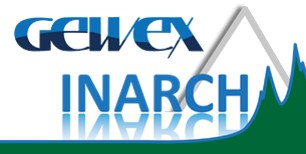
INARCH has opened a call for papers in a special issue of HP, titled: Improving Measurement, Understanding, and Prediction of Alpine Cold Regions Hydrological Processes and Their Sensitivities to Global Change.
To see details about the issue and to submit a paper, visit https://onlinelibrary.wiley.com/page/journal/10991085/homepage/call-for-papers/si-2024-001778
Description
The International Network for Alpine Research Catchment Hydrology (INARCH) is a cross-cut project of the GEWEX (Global Energy and Water Exchanges) Hydroclimatology Panel (GHP) of the World Climate Research Programme that strives to i) measure and understand high mountain atmospheric, hydrological, cryospheric, biological and human-water interaction processes, ii) improve their prediction as coupled systems, iii) diagnose their sensitivities to climate change and propose how they may be managed to promote water sustainability under global change.
INARCH has been conducting a Common Observing Period Experiment (COPE) across dozens of research basins in mountain regions around the globe over the period 2022-2024 as a focal network activity. This is a major effort that is globally unique and novel and will produce a world-class set of new observations and data, model application and diagnostic comparisons, new process understanding and insights, and better prediction of the changing mountain water cycle in the headwaters of many of the world's major river basins. This special issue gathers scientific advancements from the COPE and related high-mountain experimental, observational, modelling, and remote sensing initiatives.
While there will be a number of invited papers for this special issue, the organizers would like it to be open to everyone interested in alpine hydrology.
Topics of interest for this call for papers include but are not restricted to:
- High mountain hydrological and meteorological observations;
- Remote sensing of the mountain cryosphere;
- Process experiments and understanding;
- Hydrological model development and evaluation;
- Diagnosing past change and system behaviour;
- Predicting future hydrological change.
